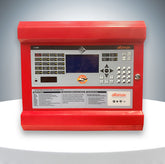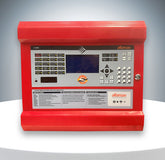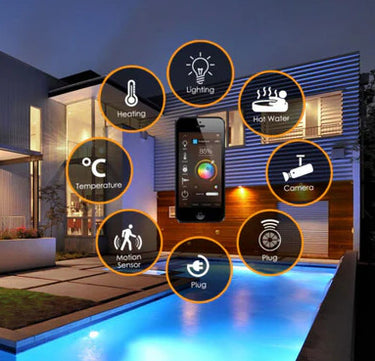A smart home is defined as a modern living environment that enables the automatic or remote control of appliances and devices via an internet connection, utilizing a mobile device or other networked technology.
In a smart home, various devices are linked through the internet, granting users the ability to manage functions including security systems, home access, climate control, lighting, and home entertainment systems.
- A smart home enables homeowners to manage appliances, thermostats, lighting, and various devices from a distance via an internet connection, utilizing a smartphone or tablet.
- These systems can be installed using either wireless or wired configurations.
- The technology associated with smart homes offers homeowners both convenience and potential cost reductions.
How Smart Homes Work?
Devices within a smart home are interconnected and can be managed from a single central interface, such as a smartphone, tablet, laptop, or gaming console. This integration allows for the control of various elements, including door locks, televisions, thermostats, home monitoring systems, cameras, lighting, and appliances like refrigerators, all through a unified home automation platform.
The automation system is typically installed on a mobile or other networked device, enabling users to schedule tasks and manage devices efficiently.
Smart home appliances are equipped with self-learning capabilities, allowing them to adapt to the homeowner's routines and make necessary adjustments.
Systems that include lighting control can help homeowners minimize electricity consumption and achieve savings on energy costs.
Certain home automation systems provide alerts to homeowners regarding any detected motion while they are away.
Additionally, some systems have the capability to contact emergency services, such as the police or fire department, in the event of a hazardous situation.

Upon establishment of a connection, devices such as a smart doorbell, smart security system, and smart appliances integrate into the Internet of Things (IoT) framework, which comprises a network of tangible objects capable of collecting and disseminating electronic data.
Devices of a Smart Home
Heating
Smart home technology has significantly enhanced the management of heating devices, enabling users to switch devices on and off as well as adjust their settings. Many of these smart products are equipped with temperature or humidity sensors that facilitate automatic operation based on predefined conditions. This category of smart home advancements also encompasses air conditioning systems.
Lighting
The advent of mobile phones, tablets, and specialized remotes has significantly enhanced the functionality and convenience of lighting products for homeowners. These modern lighting solutions enable users to turn lights on and off, establish schedules, or adjust settings according to the times of sunrise and sunset.
Similar to some traditional lighting options, many of these products can also be programmed to respond to motion. Smart bulbs, for instance, utilize Wi-Fi connectivity to relay usage statistics and metrics directly to a user's mobile device.
Additionally, this category of lighting may encompass smart home devices that regulate light intensity. Homeowners can install automatic blinds that close in accordance with sunrise schedules. Alternatively, electronic curtains provide the flexibility to control blinds via a handheld device.
Audio/Visual
A particularly attractive feature of smart homes is the ability to connect various entertainment devices, allowing them to be managed with a single remote control. Televisions and speakers can be activated on demand through applications, and they can also be programmed to operate on a schedule or controlled via voice commands.
Security
A key feature of a smart home is its superior security functionalities. Devices equipped with cameras can monitor movement, record video, or provide live streaming capabilities. These devices can be integrated with a doorbell that rings or programmed to monitor specific zones of your property. Additionally, these products enable audio and video communication with visitors at your doorstep.
Furthermore, many smart homes are upgraded with sophisticated security systems. These systems comprise motion detectors, home surveillance, alerts regarding unusual activities, and the convenience of remotely locking doors or windows via a mobile device.
Other
Smart homes may also incorporate digital assistants or home hubs, allowing users to engage with these devices through voice commands. These products are capable of answering inquiries, managing calendars, scheduling conference calls, and sending alerts.
Smart smoke and carbon monoxide detectors not only emit alarms but can also be connected to your smartphone, providing notifications when you are away from your residence. These devices can frequently be configured to send emergency alerts to designated contacts.
Automated irrigation systems have been programmable for some time; however, modern smart irrigation systems can assess climatic and environmental factors to optimize watering schedules. Additionally, these systems can monitor moisture levels and regulate irrigation to promote water conservation.












